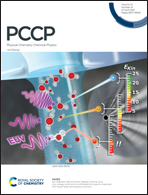Distortion energy-electronic energy compensation determines the nature of solute interactions with irradiation induced vacancies in ferritic steel
Abstract
Fundamental knowledge of vacancy–solute atom (in particular, Cu and Ni) interactions at the electronic level is of utmost importance to understand experimentally observed Cu-precipitation in reactor pressure vessel (RPV) steel. In the present investigation, using first-principles electronic structure calculations within the framework of density functional theory (DFT), we unravel the nature of such interactions between a vacancy (V) or di-vacancy and solute atoms (mainly Cu and Ni) in the bcc-Fe lattice. One of the very novel features of the present investigation is that we demonstrate the importance of distortion energy-electronic energy compensation in stabilizing the formation of vacancy–Cu and vacancy–Ni clusters in ferritic steel. Further decomposition of the electronic energy contribution into different bonding contributions in conjugation with differential charge density analyses clearly reveals the origin of stability as a consequence of mutual compensation of different energy modes. For both Cu–Cu and Ni–Ni interactions, the presence of a vacancy leads to a more attractive interaction, implying that such vacancies generated due to irradiation make solute aggregation easier compared with the case of model steel with no defects. We have also demonstrated that the formation of CumNin clusters (m, n = 1, 5) is energetically favorable in addition to demonstrating that the stability increases with an increasing number of Cu or Ni atoms. The rate of increase of stability with the addition of solute atoms is higher in the case of the addition of Cu atoms into a Ni cluster than it is for adding Ni atoms into a Cu cluster. The present investigation thus provides a deeper electronic level understanding of solute–point defect interaction and cluster formation probability for Cu and Ni atoms in the ferritic steel.



 Please wait while we load your content...
Please wait while we load your content...